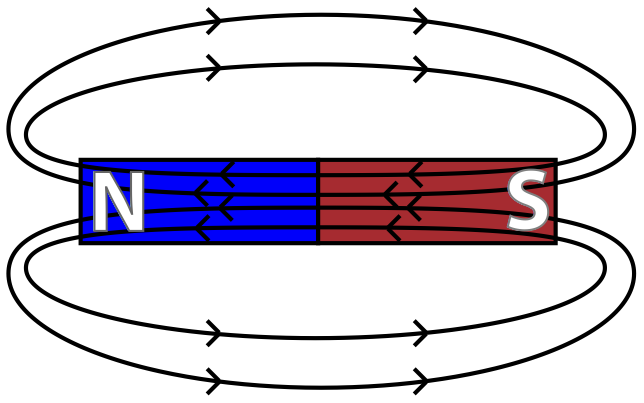It can be an electric current in a conductor or charged particles moving through space or it can be the motion of an electron in an atomic orbital magnetism is also associated with elementary particles such as the electron that have a property called spin.
Field lines of ceramic magnet.
Ceramic magnets also known as ferrite magnets are part of the permanent magnet family and the lowest cost hard magnets available today.
In the second a wall of steel provides an easier path for the lines of flux to follow.
Magnetic ceramics oxide materials that exhibit a certain type of permanent magnetization called ferrimagnetism.
For example a 1 4 cube has a surface field of 5754 gauss so does a bigger cube such as a 1 2 cube 1 cube bx0x0x0 or even a monster 2 cube magnets that are thinner in the direction of their magnetization will generally have lower surface field values.
Commercially prepared magnetic ceramics are used in a variety of permanent magnet transformer telecommunications and information recording applications.
Hard ceramic magnets are often used in applications where a permanent high strength magnetic field is required.
Ceramic magnets with adhesive backing 1 inch 25mm round disc magnets ferrite craft magnets peel and stick circle magnets small magnets with 3m dots 18 pcs 4 5 out of 5 stars 768 7 99 7.
Benefits of ceramic magnets.
As a result they.
While their hard brittle quality and low energy exclude them from some applications ceramic magnets have won wide acceptance due to their corrosion and demagnetization.
The magnetic field s lines of force exit the magnet from its north pole and enter its south pole.
They are composed of iron oxide and strontium carbonate.
These lines flow out from the magnet s pole into the steel for some distance and back out into the air to get back to the magnet s other pole.
A if small compasses are used to map the magnetic field around a bar magnet they will point in the directions shown.
Magnetic field lines are defined to have the direction that a small compass points when placed at a location.
This article describes the.
Statistics show roughly three quarters of all magnets produced globally consist of ceramic magnets.
In the first a magnet in free space is shown with the field lines flowing through air.
Temporary or soft magnets produce magnetic fields while in the presence of a magnetic field and for a short while after exiting the field.
What is a ceramic magnet ceramic magnets also known as ferrite magnets were developed in the 1960 s as a low cost alternative to metallic magnets.
Ceramic magnets offer several noteworthy benefits one of which being a low cost.
Permanent or hard magnets create their own magnetic field all the time.
The magnitude of the magnetic field b is more a function of the shape of the magnet than its size.










